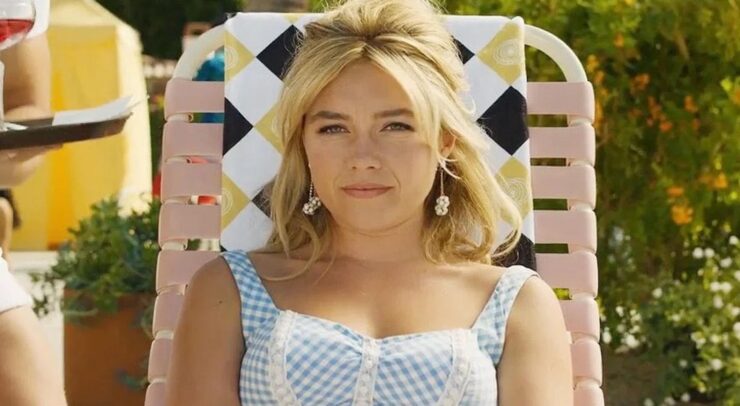The film oozes with creativity from an artistic point of view, but the story lacks substance
Having swept up the Oscars for Best Actress, Best Production and Best Costume Design – among over a dozen other awards – I felt compelled to watch Poor Things. The film is based on Alasdair Gray’s 1992 novel, written by Tony McNamara, and directed by Yorgos Lanthimos.
The latter directed the 2018 film The Favourite, also starring Emma Stone, alongside Olivia Coleman and Rachel Weisz. I found the tale of two wickedly clever women (Stone and Weisz) vying for Queen Anne’s affections (Coleman) refreshingly original and brilliantly acted. As a result, my expectations for Poor Things were high.
Some critics rave that Poor Things is a feminist narrative of sexual liberation. I, on the other hand, think that it’s a self-congratulatory, mind-numbing fiasco – based on a book written by a man, with a screenplay written by a man, directed by a man, and a male-dominated cast. The film’s poor attempt at female empowerment falls flat. I am stunned this film is being considered as groundbreaking and has received heaps of undeserved praise, becoming one of the most acclaimed films of 2023.
This film oozes with creativity from an artistic point of view, but the story lacks substance. It relies on excessive and explicit sex scenes, as well as too-frequent f-bombs. As an audience member, it’s demeaning that the filmmakers thought that vulgarity was the key to keep us engaged.
The first shot of the film is a sensory overload – intense hues of blue assault the viewer as we watch a young, pregnant woman (Emma Stone) plummet to her death from a bridge to the churning waters below.
A horribly mutilated scientist, Godwin Baxter (Willem Dafoe), finds her still-warm corpse and drags it back to his laboratory. Finding the mother and infant perfectly intact, he feels obligated to perform a grisly brain swap for the advancement of science: he cuts out the woman’s brain and replaces it with that of her baby. In a sequence reminiscent of Frankenstein, Godwin then electrocutes the woman back to life, naming her Bella Baxter.
Bella is Godwin’s experiment, alongside grotesque hybrid animals running amok. She lurches through the scientist’s lavishly decorated home in paroxysms of violence, smashing plates and urinating on herself in “childlike wonder”.
Max McCandles (Ramy Youssef), Godwin’s assistant, is charmed by Bella’s beauty. He is slightly off-put but not deterred by her outbursts and disturbing bloodlust, watching her kill small animals with a dimwitted grin.
Godwin – whom Bella calls “God” – is a father-like figure, who is intent on keeping Bella imprisoned in his home for the sake of his “scientific experiment”. Godwin agrees to let Max marry Bella, despite the fact that she has an infant’s brain, on the condition that they remain in his home.
Enter Duncan Wedderburn (Mark Ruffalo) who takes advantage of the inquisitive and naive Bella, touching her inappropriately from their first meeting. He whisks her away on a cruise where they crudely explore each others’ bodies and major cities.
Aside from the opening scene, the first half of the film is in black and white. However, the intricacy of the sets and costumes are apparent – in this regard, I believe that the Oscar for Best Production Design was deserved.
Stone sports a variety of vibrant colours – salmon pink, lime green, and sunshine yellow – with a variety of textures – ruffles and frills with melon-sized sleeves and tail-like trains on what appear to be variations of Victorian women’s clothing. The men wore slim suits, reminiscent of 1920s American fashion.
At one point, the characters take a cruise, passing through major cities, like Paris and Lisbon. However, the reconstruction of these well-known cities felt as though aliens had simply read or heard accounts about Earth without ever seeing it, before attempting to reconstruct it. The cities felt familiar, but the architecture was all wrong – very whimsical, with trolleys cruising along cables suspended in the sky, silhouetted by churning, purple sunsets.
Proceed with caution, an honest review with spoilers ahead.
It seemed that every other scene was a wide shot of apathetic, even grotesque sex that Bella affectionately calls “furious jumping” – it goes to show that she doesn’t even know what it is, let alone how to consent. Menstruation and sexual protection aren’t mentioned once.
During her cruise across the seas with Duncan, Bella discovers poverty and suffering, and naively forks over the couple’s savings to some conniving shiphands to “save” the people in need on the shore. This sequence is problematic because it reinforces the White Savior Complex – Bella doesn’t ensure where the money goes, nor does she attempt to understand why these people are in such a disastrous situation, or communicate with them directly to ask them what they need.
Sure, one could argue that she still has a young child’s mind at this point. Then again, this plot point only leads to an angry outburst from Duncan for losing their savings. At the end of the film, it clearly hasn’t had an impact, since she’s lounging in a luxurious garden drinking a cocktail, all social problems forgotten.
Toward the end of the film, Bella works at a brothel to make money, where a slew of creepy men objectify her. I suppose this sequence was to demonstrate how Bella has grown as a person, since she is now able to move and express herself like a woman her age, rather than like a child. Bella’s experience is treated as “sexual liberation” since she hardly says “no” to sex and appears to enjoy it, when really the way she’s tossed around like a used rag is incredibly degrading. She questions it slightly, but the conversation isn’t particularly meaningful.
This film dared to be creative and do something a little different, and it was greatly rewarded for it. However, it completely misses its mark – as a young woman, I can confidently say that I wasn’t empowered in the least. The film feels long and is incredibly uncomfortable to watch, what with the excessive sex scenes.
I personally would not recommend spending your time watching this raunchy jumble of madness. It is a male-dominated view of what some men clearly thought was an empowering, coming-of-age story. In reality, it’s about men quite literally wrenching a suicidal woman’s brain, identity, and infant from her corpse’s grasp.





